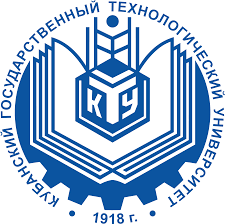
VII Съезд биофизиков России
Краснодар, Россия
17-23 апреля 2023 г.
17-23 апреля 2023 г.


|
VII Съезд биофизиков России
Краснодар, Россия
17-23 апреля 2023 г. |
 |
Программа СъездаСекции и тезисы:
Биомеханика. Биологическая подвижностьСтруктурные и функциональные особенности тропомиозина с мутациями, ассоциированными с нарушением развития миокардаД.В. Щепкин1*, А. Кочурова1, Е. Бельдия1,2, н. Кубасова3, А. Цатурян3, Д. Левицкий4, С. Бершицкий1, Д. Ямпольская4, А. Матюшенко4, Г. Копылова1 1.Институт иммунологии и физиологии УрО РАН; 2.УрФУ, г. Екатеринбург, Россия; 3.Институт механики МГУ, г. Москва, Россия; 4.Институт биохимии им. А.Н. Баха РАН, Москва, Россия; * cmybp(at)mail.ru Показано, что тропомиозин (Tpm) участвует не только в регуляции мышечного сокращения, но и в развитии сердца, а именно в «созревании» миокарда желудочков, которое заключается в уплотнении сети волокон миокарда и сужении межтрабекулярных лакун (McKeown et al., Dev. Dyn., 2014). Обнаружены мутации в гене TPM1, кодирующем сердечный альфа-тропомиозин (Tpm1.1), ассоциированные с некомпактной кардиомиопатией левого желудочка (НМЛЖ) и врождёнными пороками сердца (ВПС) (Chang et al., Mol. Genet. Metab., 2011; England et al., J. Mol. Cell Cardiol., 2017). Мы исследовали структурно-функциональные свойства Tpm1.1 с НМЛЖ и ВПС мутациями L113V, I130V, D159N, R160H и S229F.
С помощью дифференциальной сканирующей калориметрии мы обнаружили, что все мутации влияют на доменную структуру Tpm1.1. Для выполнения регуляторной функции необходимо взаимодействие N- и С-концов соседних молекул тропомиозина на актиновом филаменте (F-актин). Мы оценили влияние мутаций на это взаимодействие, измеряя вязкость раствора Tpm1.1. Мутация R160H ухудшала взаимодействие N- и C-концов молекул Tpm, а все остальные мутации усиливали его. Мы проанализировали влияние мутаций на взаимодействие Tpm1.1 с F-актином. Мутации I130V и D159N уменьшали аффинность Tpm1.1 к F-актину, а остальные не влияли на него. Эффект мутаций на термостабильность F-актин-Tpm комплекса мы исследовали по измерению светорассеяния раствора F-актина с Tpm1.1. Мутация R160H снижала термостабильность комплекса, а мутация D159N увеличивала её. Для исследования влияния мутаций на кальциевую регуляцию актин-миозинового взаимодействия в предсердиях и желудочках мы проанализировали кальциевую зависимость скорости скольжения тонких филаментов, реконструированных из F-актина, тропонина и Tpm1.1, по миозину предсердий и желудочков в in vitro подвижной системе. Эффекты мутаций зависели от изоформ миозина. Мутации D159N и R160H существенно снижали максимальную скорость тонких филаментов при насыщающей концентрации кальция по миозину желудочков. Мутации L113V и D159N в Tpm1.1 уменьшали, а I130V и S229F увеличивали максимальную скорость филаментов по миозину предсердий. Мутации I130V, D159N и R160H уменьшали кальциевую чувствительность скорости скольжения филаментов по миозину предсердий. Моделирование молекулярной динамики показало, что мутация L113V вызывает изменения структурных свойств Tpm1.1, в том числе в участках молекулы, которые удалены от места внесения аминокислотной замены. Мутации D159N и R160H не оказывали существенного влияния на изгибную жесткость молекулы Tpm. Отсутствие изменений изгибной жёсткости молекулы Tpm с мутациями D159N и R160H указывает на то, что функциональные изменения регуляции актин-миозинового взаимодействия, вызванные этими мутациями, видимо, не связанны непосредственно с изменением механических свойств молекулы Tpm. Таким образом, мутации тропомиозина, ассоциированные с НМЛЖ и ВПС, влияют на характеристики актин-миозинового взаимодействия в миокарде желудочков и предсердий. Эксперименты выполнены на оборудовании ЦКП ИИФ УрО РАН и поддержаны госпрограммами 122022200089-4, 122041100022-3 и АААА-А19-119012990119-3. Structural and functional features of tropomyosin with mutations associated with impaired myocardial developmentD. Shchepkin1*, A. Kochurova1, E. Beldiia1,2, N. Koubasova3, A. Tsaturyan3, D. Levitsky4, S. Bershitsky1, D. Yampolskaya4, A. Matyushenko4, G. Kopylova1 1.Institute of Immunology and Physiology, of the RAS, Yekaterinburg, Russia; 2.UrFU, Yekaterinburg, Russia; 3.Institute of Mechanics of Moscow State University, Russia; 4.A.N. Bach Institute of Biochemistry of the RAS, Moscow, Russia; * cmybp(at)mail.ru It was shown that tropomyosin (Tpm) is involved not only in the regulation of muscle contraction but also in the heart development, namely, in the "maturation" of the ventricular myocardium, which consists of thickening of myocardial fibers network and narrowing of the intertrabecular lacunae (McKeown et al., Dev. Dyn., 2014). Mutations in the TPM1 gene encoding cardiac alpha tropomyosin (Tpm1.1) associated with non-compact left ventricular cardiomyopathy (LVNC) and congenital heart defects (CHD) have been found (Chang et al., Mol. Genet. Metab., 2011; England et al., J. Mol. Cell Cardiol., 2017). We investigated the structural and functional properties of Tpm1.1 with LVNC and CHD mutations L113V, I130V, D159N, R160H, and S229F.
Using differential scanning calorimetry, we found that all mutations affect the domain structure of Tpm1.1. The interaction of the N- and C-termini of neighboring tropomyosin molecules on the actin filament (F-actin) is necessary for performing the regulatory function. We evaluated the effect of mutations on this interaction by measuring the viscosity of the Tpm1.1 solution. The R160H substitution weakened the interaction between the N- and C-ends of tropomyosin molecules, while all other mutations enhanced it. We analyzed the effect of mutations on the interaction of Tpm1.1 with F-actin. Mutations I130V and D159N reduced the affinity of Tpm1.1 for F-actin, while the others did not affect it. We also studied the effect of mutations on the thermal stability of the F-actin-Tpm complex by measuring the light scattering of the F-actin solution with Tpm1.1. The R160H mutation reduced the thermal stability of the complex, while the D159N substitution increased it. To study the effect of mutations on the calcium regulation of actin-myosin interaction in the atria and ventricles, we investigated the calcium dependence of the sliding velocity of thin filaments reconstructed from F-actin, troponin, and Tpm1.1 on atrial and ventricular myosin in an in vitro motility assay. The effects of mutations depended on the isoforms of myosin. Mutations D159N and R160H significantly reduced the maximum velocity of thin filaments at a saturating calcium concentration on ventricular myosin. Mutations L113V and D159N decreased the maximum filament velocity on atrial myosin, while I130V and S229F increased it. Mutations I130V, D159N, and R160H decreased the calcium sensitivity of the filament velocity on atrial myosin. Modeling of molecular dynamics showed that the L113V mutation causes changes in the structural properties of Tpm1.1, including those in the regions of the molecule remote from the site of amino acid substitution. Mutations D159N and R160H had no significant effect on the flexural rigidity of the Tpm molecule. The absence of changes in the bending rigidity of the Tpm molecule with the D159N and R160H mutations indicates that the functional changes in the regulation of the actin-myosin interaction caused by these mutations are apparently not directly related to changes in the mechanical properties of the Tpm molecule. Thus, tropomyosin mutations associated with LVNC and CHD affect the characteristics of the actin-myosin interaction in the ventricular and atrial myocardium. The experiments were performed on the equipment of the Collective Use Center of the Institute of Immunology and Physiology of the Ural Branch of the Russian Academy of Sciences and supported by the state programы 122022200089-4, 122041100022-3 и АААА-А19-119012990119-3. Докладчик: Щепкин Д.В. 76 2023-02-03
|